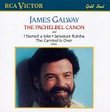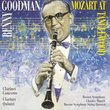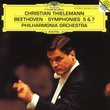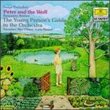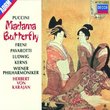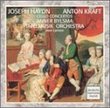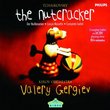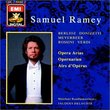| All Artists: Ottorino Respighi, Antal Dorati, Harold Lawrence, Philharmonia Hungarica Title: Ottorino Respighi: Ancient Dances & Airs Members Wishing: 0 Total Copies: 0 Label: Philips Release Date: 5/12/1992 Genre: Classical Styles: Historical Periods, Modern, 20th, & 21st Century Number of Discs: 1 SwapaCD Credits: 1 UPC: 028943430425 |
Search - Ottorino Respighi, Antal Dorati, Harold Lawrence :: Ottorino Respighi: Ancient Dances & Airs
 | Ottorino Respighi, Antal Dorati, Harold Lawrence Ottorino Respighi: Ancient Dances & Airs Genre: Classical
If you're ever looking for really nice, pre-recorded wedding music, then you should try this record. The very first couple of minutes of the first track make perfect processional music in an average-sized church. The pie... more » |
Larger Image |
CD DetailsSynopsis
Amazon.com If you're ever looking for really nice, pre-recorded wedding music, then you should try this record. The very first couple of minutes of the first track make perfect processional music in an average-sized church. The piece is appealingly arranged for chamber orchestra from Renaissance lute music, and it appears to swell in volume like an approaching parade. The result has just the right combination of joy and solemnity. Anyway, this first recording of the complete suites of dances is still by and large the best. It was another triumph for Dorati and his enterprising colleagues at Mercury Living Presence. Even if you don't have a wedding to go to, it's worth hearing. --David Hurwitz Similarly Requested CDs
|
CD ReviewsSimply -- Ravishing. John Parker Marmaro | Spring Hill, Florida | 12/09/1999 (5 out of 5 stars) "Another listener, reviewing the Neville Marriner version of these three suites by Ottorino Respighi, called it "the most beautiful music one is likely to hear" or the like. And it is. The Penguin Guide to Classical CDs awarded this famous and magnificent recording a Rosette (its "Academy Award", so to speak). It is, simply put, almost achingly beautiful music: sometimes austere, sometimes brusque, often haunting and enchanting, or full-heartedly joyous; delectably scored (Respighi was a student of Rimsky-Korsakov), stunningly played, and favored with so rich a recording quality that it hardly seems possible the recordings were made in the 1950s! This is music that soothes the spirit, engages the mind and feeds the soul--- a must for anyone who can truly appreciate-- and it SHOULD be capitalized!-- Beauty. All the recorded versions of this music are delectable and this particular version is the benchmark by which the others are judged! A true desert island recording!" Still and always a legendary recording. J-c | Canada | 08/02/2004 (5 out of 5 stars) "A great job from the Philharmonia of Hungary under the supreme leadership of Antal Dorati. Control, balance and careful handling of the musical nuances, this is essentially what Dorati got from his musicians during that session. The product, apart from being a truly great recording, has awe-inspiring, unmatched playing all around. If you're a fan of Respighi, or simply a collector of good instrumental music, the Ancient Dances and Airs belong to your collection." All things old are new again FrKurt Messick | Bloomington, IN USA | 07/28/2003 (5 out of 5 stars) "--Ottorino Respighi--
Respighi (1879-1936) was one of the great orchestra composers of Italy (a nation whose composers are more often associated with opera). Born into a family of professional musicians, Respighi was educated with greats such as Rimsky-Korsakov and Max Bruch. Deriving inspiration from the likes of Richard Strauss as well as ancient and medieval musical styles, Respighi showed great talent as a composer as well as an arranger and synthesiser of new presentations for old music. Such is the case with the pieces in this recording, Ancient Airs and Dances.--Ancient Airs and Dances-- This has become one of the more popular pieces of Respighi in the late twentieth century; many know Respighi only through these works, and others have heard this music without knowing the origin or Respighi's role in their presentation. Largely deriving from Italian and French music for the lute, the original melody lines and pieces come from seventeenth and eighteenth century. The piece consists of three suites of four pieces each, the first two for orchestra and the third for strings. (All three suites were made into a ballet shortly after Respighi's death by his wife and student, Elsa, in 1937.) There is great simplicity in the music here. Yet there is also grand texture. The music follows a logical progression and throws in few surprises, but is a delight in the journey through the tunes as would be a stroll through a familiar, favourite park. The tempo varies between pieces, sometimes lively and sometimes sombre. For this particular recording the tempo is a bit slower overall than I am used to, but it has a pleasant effect overall.--Antal Dorati-- Dorati made so many recordings he lost track of them. Working with a wide range of composers' works, from Tchiakovsky to Bartok to Copland, he used his early European training to great effect as the head of symphonies in Dallas, Detriot, and Minneapolis, in addition to heading the National Symphony in Washington, DC in the 1970s. Many classical music enthusiasts grew up with Dorati recordings of classic as well as modern/new compositions. --Philharmonia Hungarica-- The Philharmonia Hungarica grew out of refugee musicians from Hungary after the 1956 uprising forced hundreds to flee the country. Dorati's Hungarian background as well as reputation and contacts in the West made him a natural leader for this fledgling group, who made this Respighi recording less than two years after leaving Hungary. Like Dorati, the Philharmonia Hungarica had so many recordings it was difficult to keep track of them all. Possessing talented people with training from the East and West, they play with skill and grace that is a true joy to hear.--This Recording-- This is a CD rendering of a previously recorded vinyl record. It was recorded in 1958 utilising three microphones on separate channels; the original tapes were preserved by Mercury recording and remixed for the CD without filtering, equalisation, limiting or compression. I had an audio cassette of this same recording a decade ago; the CD is obviously much better, but the musical integrity is strong on both recording media." |

 Track Listings (18) - Disc #1
Track Listings (18) - Disc #1